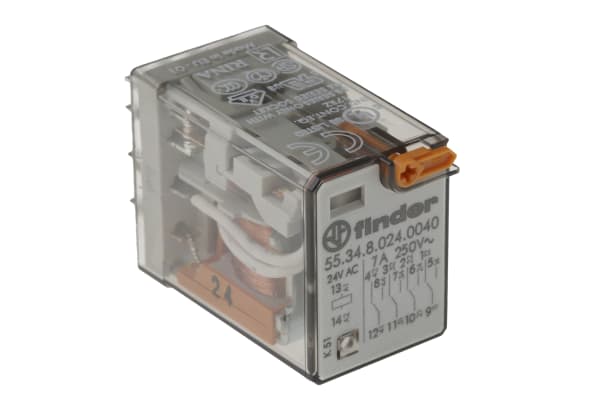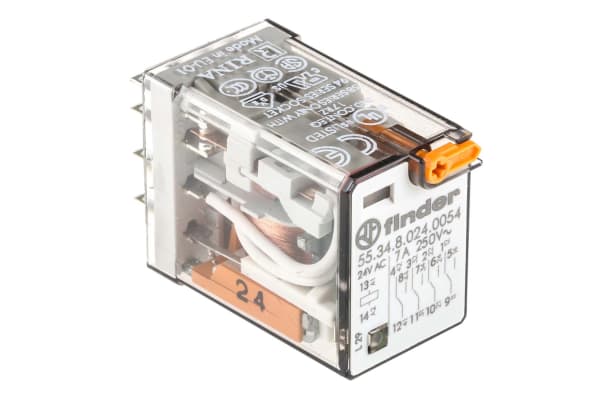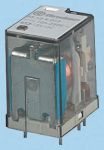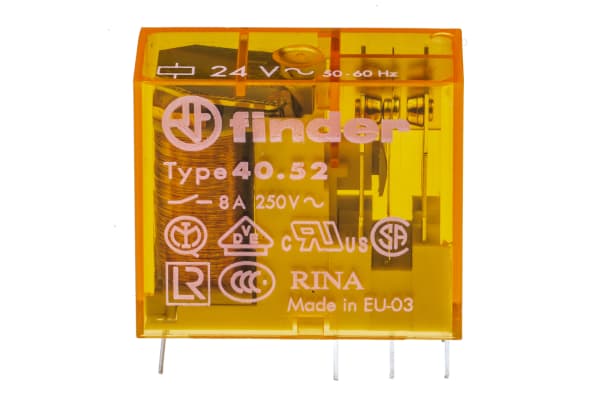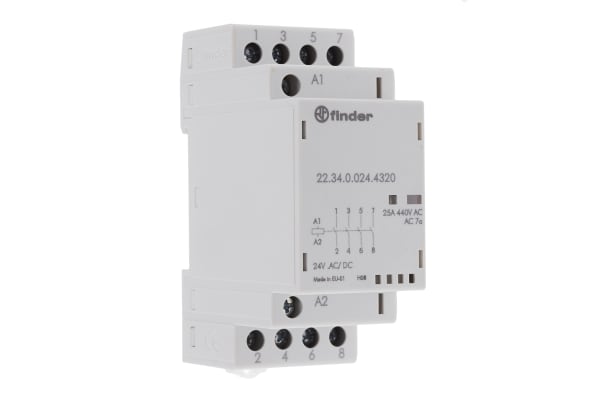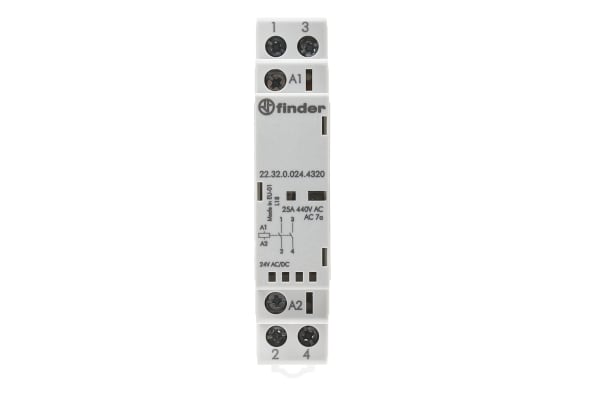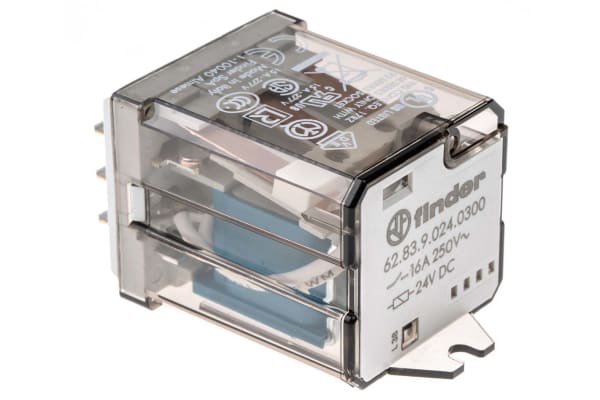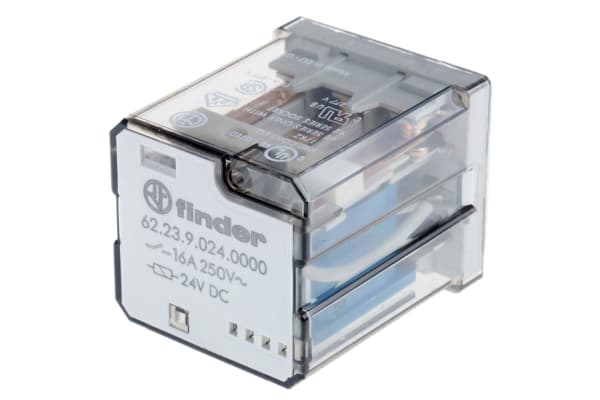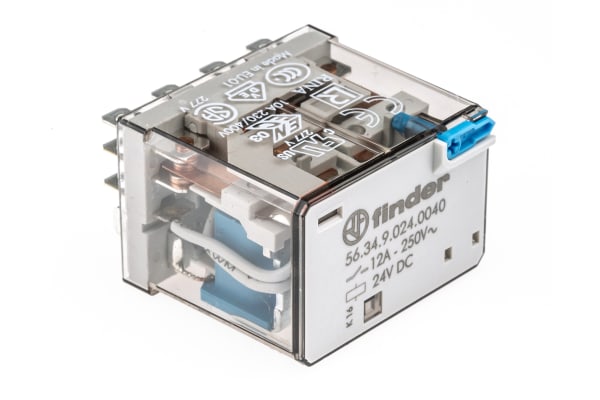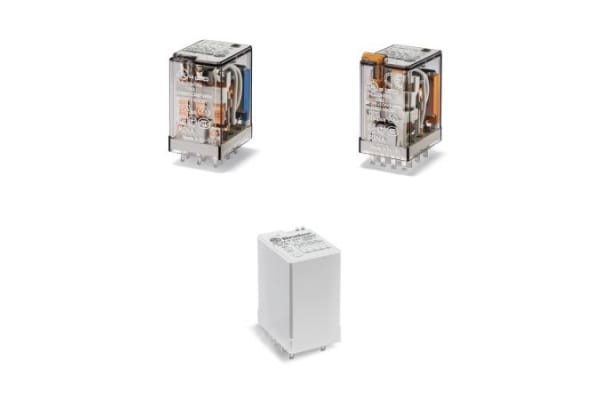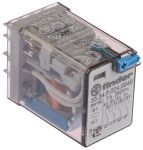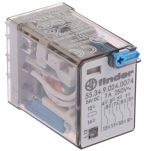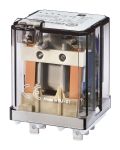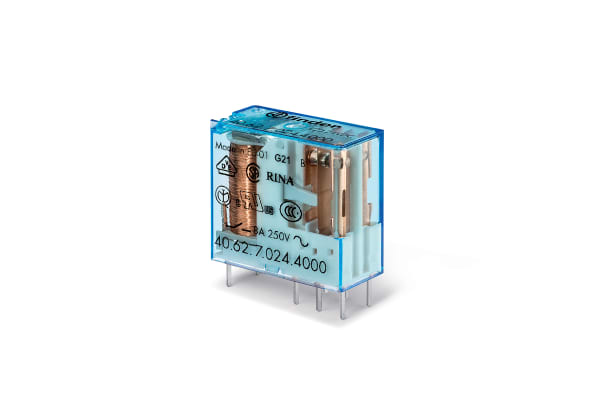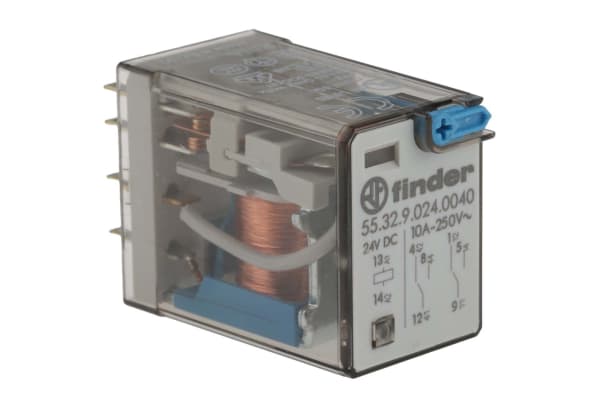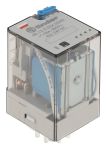Non-Latching Relays
Relays are electrical switches that are operated by electrical impulses with the primary function to open and close a circuit, they can also be referred to as industrial switches. There are 2 main types available, latching and non–latching relays.How do non-latching relays work?Non-latching relays are in a normally closed (NC) position and will stay in this state without power. When power passes through the circuit, the relay switched to a normally open (NO) position by using an internal coil to generate a magnetic force, holding this NO position. Once the current is turned off, it returns to the NC position. This makes non-latching relays well suited to push-button applications like keyboards and micro-controller input buttons.What are non-latching relays used for?Non-latching relays are highly durable and versatile components, making their performance long lasting and suitable for use in a wide range of applications, such as:Automotive enginesHousehold appliancesIndustrial machineryMedical equipmentTelecommunications equipmentWhat is the difference between latching and non-latching relays?Both types of relays in similar in design and function, however, a significant difference between them is that a latching relay will remain in the last position it when it was last powered, whereas a non-latching goes back to its normal position. This makes each more type of relay suitable for different applications. Considerations when selecting a relayWhen choosing a relay, it is important to consider a number of specifications to ensure it is fit for purpose, some factors include:Coil voltage – the required voltage to actuate the switching mechanism. If a voltage is too high this could damage the components, if it is too low then it will not actuate. Contact configuration – This is the state the contacts are in without power. For example SPST, single pole single throw.Contact material – the relay contacts are available in many materials that have certain properties. Common materials are gold, silver, tin oxide and nickel Coil power – the amount of power (watts) the coil operates at. This must match the power in the circuit for correct function. Coil resistance – the amount of resistance (ohms) in the circuit that the coil creates.
-
Finder, 24V ac Coil Non-Latching Relay 4PDT, 7A Switching Current Plug In, 4 Pole, 55.34.8.024.0040
IDR185,865.08 -
Finder, 24V ac Coil Non-Latching Relay 4PDT, 7A Switching Current Plug In, 4 Pole, 55.34.8.024.0054
IDR191,319.36 -
Finder, 24V ac Coil Non-Latching Relay DPDT, 10A Switching Current PCB Mount, 2 Pole, 55.12.8.024.0000
IDR174,012.51 -
Finder, 24V ac Coil Non-Latching Relay DPDT, 8A Switching Current PCB Mount, 2 Pole, 40.52.8.024.0000
IDR135,098.32 -
Finder, 24V ac/dc Coil Non-Latching Relay 4NO, 25A Switching Current DIN Rail, 4 Pole, 22.34.0.024.4320
IDR843,210.71 -
Finder, 24V ac/dc Coil Non-Latching Relay DPNO, 25A Switching Current DIN Rail, 2 Pole, 22.32.0.024.4320
IDR616,543.42 -
Finder, 24V ac/dc Coil Non-Latching Relay SP-NO/NC, 25A Switching Current DIN Rail, 2 Pole, 22.32.0.024.4520
IDR605,005.52 -
Finder, 24V ac/dc Coil Non-Latching Relay SPDT, 16A Switching Current DIN Rail Single Pole, 13.01.0.024.0000
IDR1,260,777.80 -
Finder, 24V dc Coil Non-Latching Relay 3P-NO, 16A Switching Current Flange Mount, 3 Pole, 62.83.9.024.0300
IDR276,699.82 -
Finder, 24V dc Coil Non-Latching Relay 3PDT, 10A Switching Current Plug In, 3 Pole, 55.33.9.024.0010
IDR181,249.92 -
Finder, 24V dc Coil Non-Latching Relay 3PDT, 10A Switching Current Plug In, 3 Pole, 60.13.9.024.0040
IDR271,560.21 -
Finder, 24V dc Coil Non-Latching Relay 3PDT, 16A Switching Current PCB Mount, 3 Pole, 62.23.9.024.0000
IDR269,986.86 -
Finder, 24V dc Coil Non-Latching Relay 4PDT, 12A Switching Current PCB Mount, 4 Pole, 56.44.9.024.0000
IDR309,530.39 -
Finder, 24V dc Coil Non-Latching Relay 4PDT, 12A Switching Current Plug In, 4 Pole, 56.34.9.024.0040
IDR322,222.08 -
Finder, 24V dc Coil Non-Latching Relay 4PDT, 7A Switching Current PCB Mount, 4 Pole, 55.34.9.024.0090
IDR210,828.90 -
Finder, 24V dc Coil Non-Latching Relay 4PDT, 7A Switching Current Plug In, 4 Pole, 55.34.9.024.0040
IDR187,753.10 -
Finder, 24V dc Coil Non-Latching Relay 4PDT, 7A Switching Current Plug In, 4 Pole, 55.34.9.024.0074
IDR208,940.88 -
Finder, 24V dc Coil Non-Latching Relay DPDT Plug In, 2 Pole, 62.32.9.024.0040
IDR306,698.36 -
Finder, 24V dc Coil Non-Latching Relay DPDT, 10A Switching Current PCB Mount, 2 Pole, 40.62.7.024.4000
IDR144,643.31 -
Finder, 24V dc Coil Non-Latching Relay DPDT, 10A Switching Current Plug In, 2 Pole, 55.32.9.024.0040
IDR184,921.07 -
Finder, 24V dc Coil Non-Latching Relay DPDT, 10A Switching Current Plug In, 2 Pole, 60.12.9.024.0040
IDR253,099.57 -
Finder, 24V dc Coil Non-Latching Relay DPDT, 12A Switching Current Plug In, 2 Pole, 56.32.9.024.0040
IDR198,871.44 -
Finder, 24V dc Coil Non-Latching Relay DPDT, 30A Switching Current Flange Mount, 2 Pole, 66.82.9.024.0000
IDR272,504.22 -
Finder, 24V dc Coil Non-Latching Relay DPDT, 8A Switching Current PCB Mount, 2 Pole, 40.52.7.024.0000
IDR104,890.00



